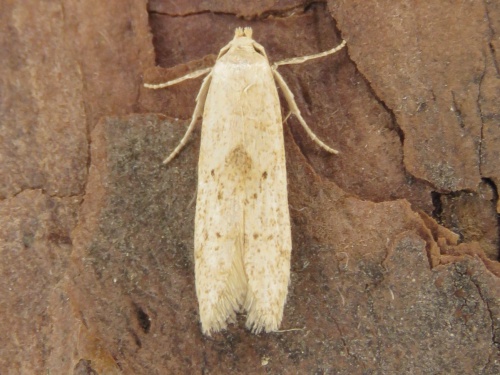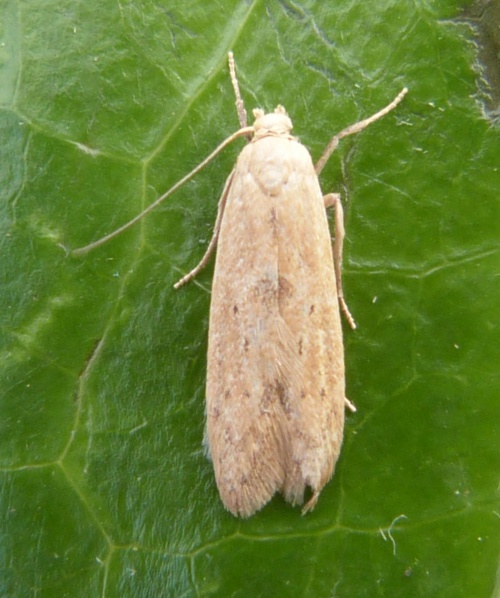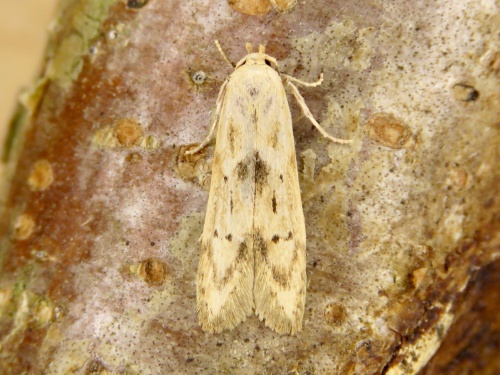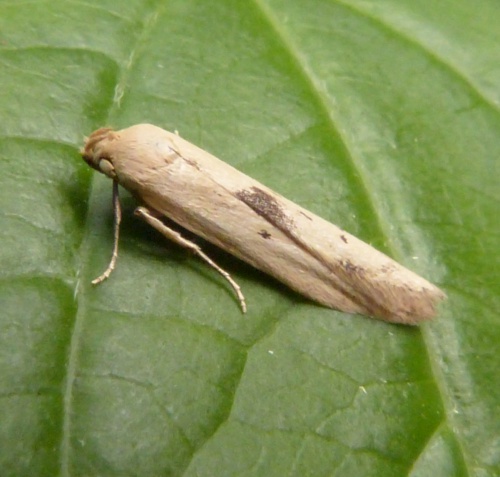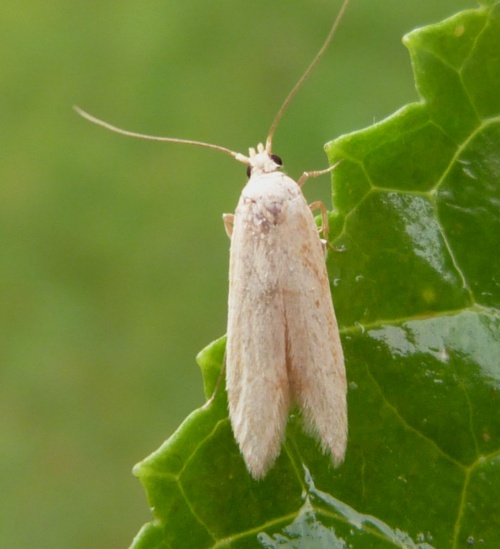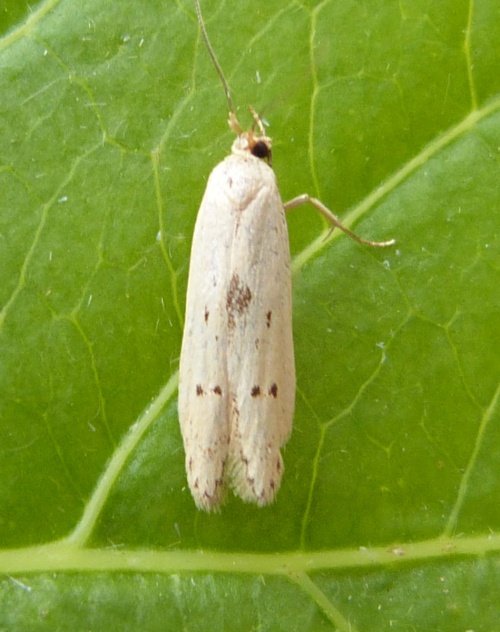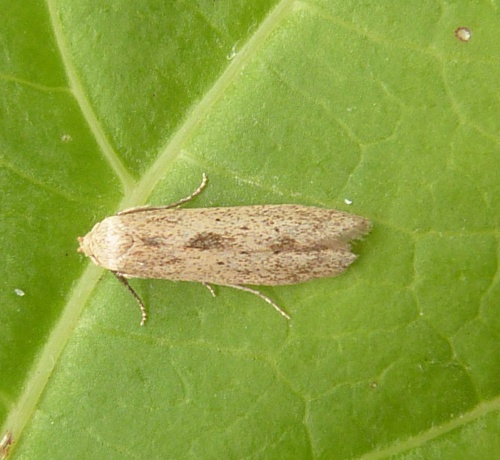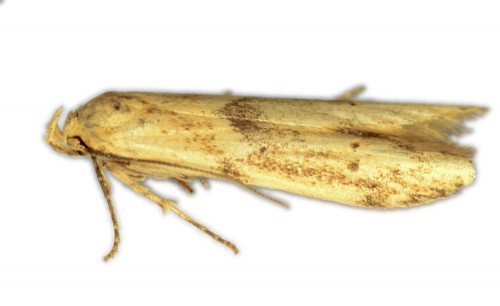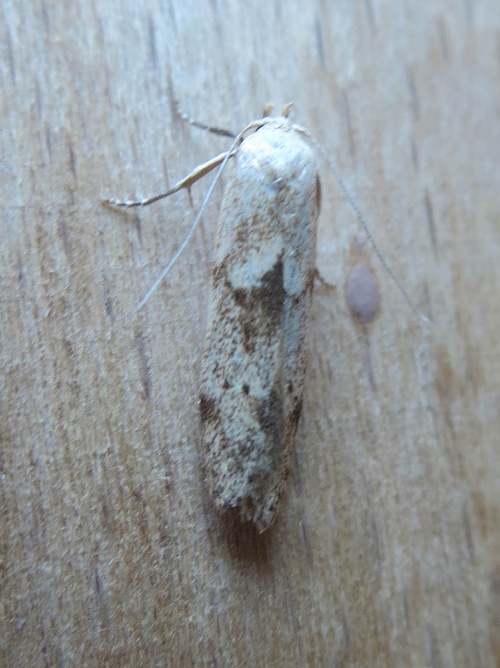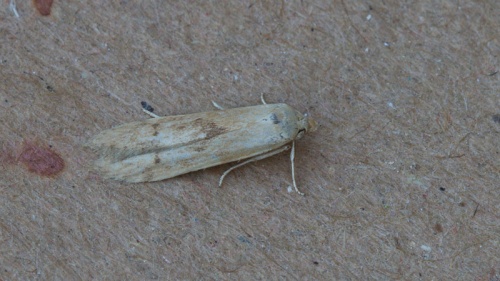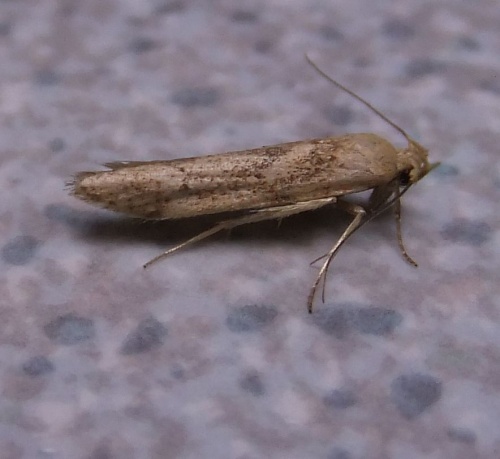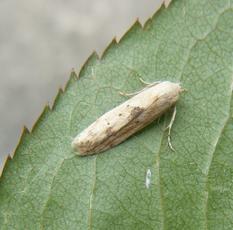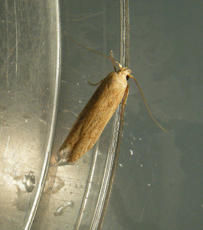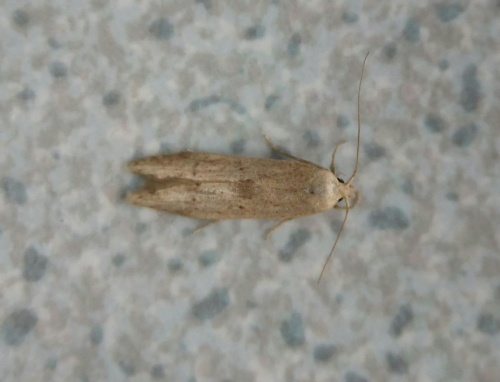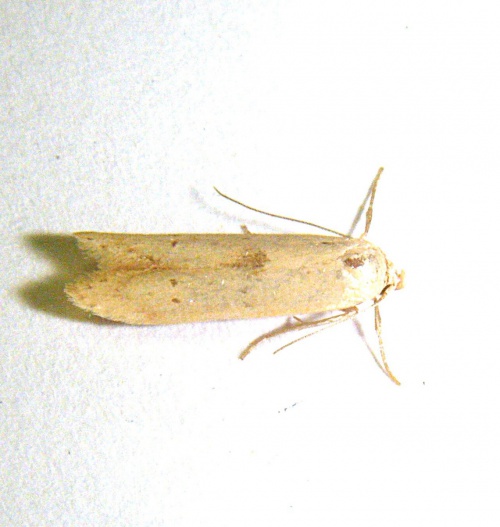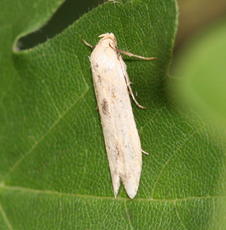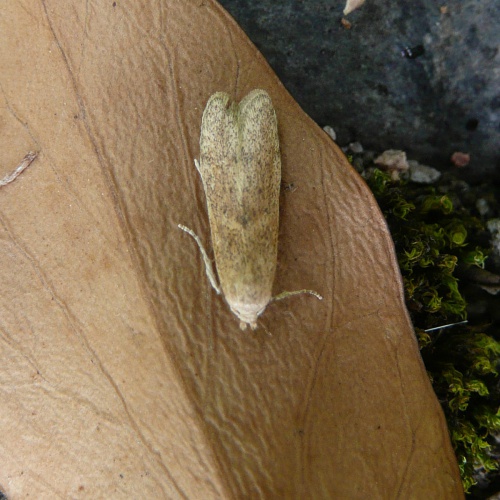Blastobasis lacticolella
London Dowd
Wakely's Dowd
Wingspan 18-21 mm. Light buff with browner markings but very variable in the degree of markings, with unmarked examples common.
Hedgerows, woodland and gardens.
The adult is nocturnal and comes readily to light in May and June and again in the autumn.
Larva feeds on various mosses, dead insects, detritus, decaying vegetable matter, also on seedpods of Tree Lupin and Tansy.
Originally not a British species, this moth was accidentally introduced with fruit and vegetables and appears to be established and expanding its range. It was first recorded in Kent in 1946 (as B. decolorella). In the Butterfly Conservation’s Microlepidoptera Report 2011 this species was classified as common.
Occasional but probably increasing in Leicestershire and Rutland. L&R Moth Group status = C (very scarce resident or rare migrant)
Leicestershire & Rutland Map
Enter a town or village to see local records
MAP KEY:
Yellow squares = NBN records (all known data)
Coloured circles = NatureSpot records: 2020+ | 2015-2019 | pre-2015
UK Map
Species profile
- Common names
- London Dowd, Wakely's Dowd
- Species group:
- Moths
- Kingdom:
- Animalia
- Order:
- Lepidoptera
- Family:
- Blastobasidae
- Records on NatureSpot:
- 249
- First record:
- 13/06/2003 (Skevington, Mark)
- Last record:
- 16/09/2023 (Graves, Hazel)
Total records by month
% of records within its species group
10km squares with records
The latest images and records displayed below include those awaiting verification checks so we cannot guarantee that every identification is correct. Once accepted, the record displays a green tick.
In the Latest Records section, click on the header to sort A-Z, and again to sort Z-A. Use the header boxes to filter the list.


